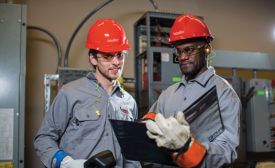Home » Keywords: » safety improvement
Items Tagged with 'safety improvement'
ARTICLES
Safety Technology
Delegating safety to employees
User-friendly software engages the frontline
September 12, 2019
NFPA 70E® provides a comprehensive & effective program
Spark safety improvements
August 20, 2018
An actionable safety plan: Part 3 – Sustaining safety success
This is the third in a three-part series
April 9, 2018
An actionable safety plan: Part 1- Improving safety performance
This is the first in a three-part series
October 17, 2017
Become a Leader in Safety Culture
Build your knowledge with ISHN, covering key safety, health and industrial hygiene news, products, and trends.
JOIN TODAYCopyright ©2025. All Rights Reserved BNP Media.
Design, CMS, Hosting & Web Development :: ePublishing




